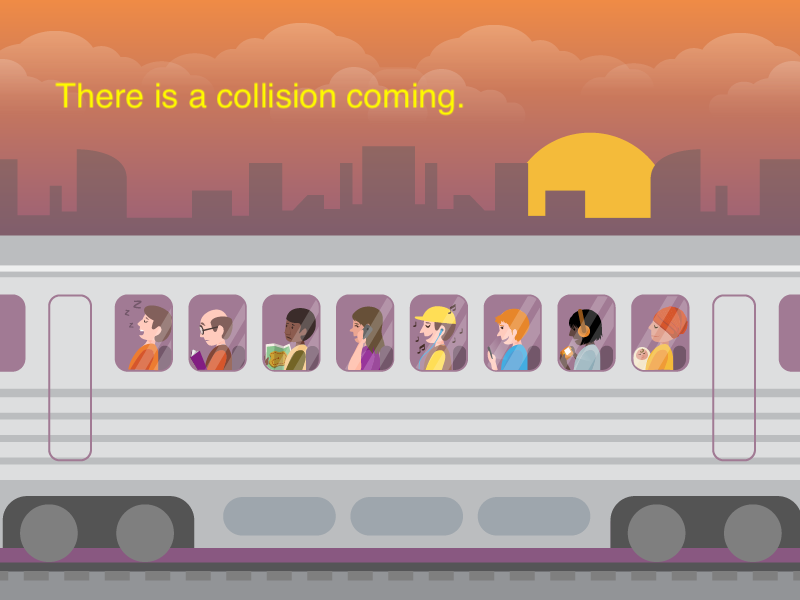Continuous Localization: The Coming Collision in Your (Software) Company
Two different words and two different workflows will cause problems when they come together. Read about three.
Software product companies and translation and localization providers work in two different words and workflows. That can threaten a successful international expansion.

Continuous Localization is the biggest challenge faced by any software company that wants to deliver a localized version of their product.
Here's why:
1) You're product's text doesn't fit into the flow of a translator.
When developers use text (think menus or notification messages) in a software product they do that using something called a resource file. At least they are supposed to. Poor coders will embed their text (called strings) into their code. But the standard is putting that text into a separate resource file. These resource files can be large, and complex and vary based on the coding language used. And they are often spread across the databases that software companies use to manage their code. (Something called a repository) That in itself is a problem, but it gets worse.
Far worse.
Resource files don't fit into the flow of a translator. Translators work by receiving a written document with context. e.g. A user guide for a fridge to be used in a kitchen. A resource file isn't a written document. It's a list of text used in a software program. It's barely decipherable to a software developer. It's almost always incomprehensible to a translator. Imagine receiving all the elements of a menu in the browser you're using to read this article. That's what's in a resource file. Now try and figure out the context, usage and correct translation for words like "transformations".
And when software companies translate their product, including text, and then make a change to a single word, that single word needs to be translated. Stories have been told of a translator getting a single word needing translation. This causes immense problems with translators.
2) Translation cannot keep up with development & deployment.
Software companies deploy code changes regularly. Large global companies like Facebook, Google and Amazon deploy code thousands of times a day.
A fast translation company will return translated content in three days.
These two workflows are fundamentally incompatible.
Something has to break. And it's usually the development velocity. That's the speed at which they develop and deliver software products to customers.
Software used to be delivered in boxes. Now it's delivered over the cloud.
That's the root cause of the collision. And software isn't going back into the box.
3) The tech stacks don't talk to each other.
The software development operations systems are optimized for development velocity, maximum speed, and security in deploying high-quality software. They are a human-to-machine-based series of systems.
The translation and localization management systems (TMS) are optimized for managing content quality. They are primarily content systems that deliver source text for translation to humans and cycle that back into a content deployment system.
There are lots of systems inside an organization that don't talk to each other. The system you use to pay your employees doesn't need to talk to your web content management system.
But the software development operations systems and the translation management systems do. They are connected because the text (strings) in software live inside the software systems and need to be sent to the translation systems.
The text contained in the software development systems changes frequently. There are still many companies and organizations that manage their text strings manually by collecting the text into spreadsheets and emailing them to those managing the translation management system.
A step up is connecting the resource files directly to the TMS. This is possible and some TMSs do provide 'connectors' that provide that integration. But imagine having 500+ repositories in a large organization all needing to send text to the TMS. How? In what order? Never mind that there will be conflicts in changed done within the software development systems.
The problem is so large and so significant the companies develop in-house solutions to manage this task. For a best-in-class look at how Netflix did this, check out their article "Localization Technologies at Netflix".
All of these three problem areas have the potential to cause collisions in your company. If you'd like help in find a solution to these changes, please get in touch.
